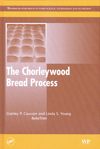In our continued series on how bread bakers are providing value to their products in these tough economic times,SF&WB magazine talks to J. Bohn Popp, vice president of marketing for Aunt Millie’s Bakeries, Fort Wayne, Ind.
In our continued series on how bread bakers are providing value to their products in these tough economic times,SF&WB magazine talks to J. Bohn Popp, vice president of marketing for Aunt Millie’s Bakeries, Fort Wayne, Ind.
Snack Food & Wholesale Bakery: Let’s begin with the major consumer trends impacting the baking industry.
J. Bohn Popp:Until Labor Day, I would have said that whole grain, fiber and demographics were the top actors in the bread aisle. But since the summer of 2009, outside of the thin-bun phenomenon, it has been the horrible economic conditions that are top of the mind with consumers in the Midwest. Business is converting to private label and overall volume appears to be down since the fall.
I believe that consumers are still interested in bread as a health vehicle but everyone is looking for a bargain. This trend has been exacerbated by retailers and by manufacturers who are willing to sell below cost, at prices not seen in [more than] 10 years.
The top five factors we see affecting the bread aisle include, first, a poor economy. Consumers are looking for a low price. Second, health attributes, specifically whole grain and fiber, but reduced sodium is around the corner. Third, there’s a natural lifestyle group who wants health from natural sources. Natural has replaced more expensive organic. Fourth, there are demographics, and specifically aging baby boomer and reduced consumption. Fifth, there are fringe and fad diets. Gluten free is a weak sister to low carbohydrates. It is not having a major effect on the bread aisle that low carb did six years ago, but it is not helping.
SFW&B: How is your company responding to these consumer trends?
Popp: Aunt Millie’s introduced Early American breads as a premium, all-natural bread that appeals to the growing segment of consumers who are looking for health from natural sources. These consumers want whole grains and fiber, and non-processed ingredients including flour. This line reflects the direction of theAunt Millie’spremium bread line as a whole.
SF&WB: How is Aunt Millie’s targeting various eating occasions?
Popp: To be honest, we have not specifically targeted eating times. However, we do cover each time period thanks to our evolving product mix. For instance, the fact that we have focused more attention to the super premium category including our Swirl Breads has given us a good toasting item for breakfast. Our premiumAunt Millie’svariety and white enriched breads are soft and moist with a tight grain. This makes them good sandwich breads for lunch. We have had recent success with our old-fashioned dinner roll line, including a Hawaiian roll. This is a very good complement for dinner.
SF&WB:How are consumers reacting to slowdown in economy?
Popp: Again, the poor economy is having a major effect on the commercial bread business. The major retailers are asking for very competitive prices for their store brands and are achieving this with low prices not seen in over 10 years.
Very aggressive promotions on premium breads are critical not in growing but just maintaining existing business. There is no question that the recession has had a strong lag effect on the bread industry. The commercial bread market did not feel the recession during actual housing and equity market crash during the fall of 2008 or the following winter. But in the Midwest, starting in the summer of 2009, consumers began to lower their grocery budgets and began looking for bargain alternatives to their everyday breads, rolls and buns.
We are being very aggressive with promotions, and we are taking a more strategic view of new product rollouts. First, our customers are demanding more lead time, secondly, our customers are demanding SKU [stock-keeping units] rationalization so you cannot just try new things and expect to get authorized. Third, we need to grow volume in this difficult economy so we realize we can’t always be first to the market but we need to be right to the market – introducing the right product at the right time.
Editor’s Note:Check out next week’s installment on how bakers are adding value to the bread aisle.
To read more from other experts in the bread
aisle, check outPART IandPART IIof previous installments.
Adding Value to the Bread Aisle (Part III)
Looking for a reprint of this article?
From high-res PDFs to custom plaques, order your copy today!






